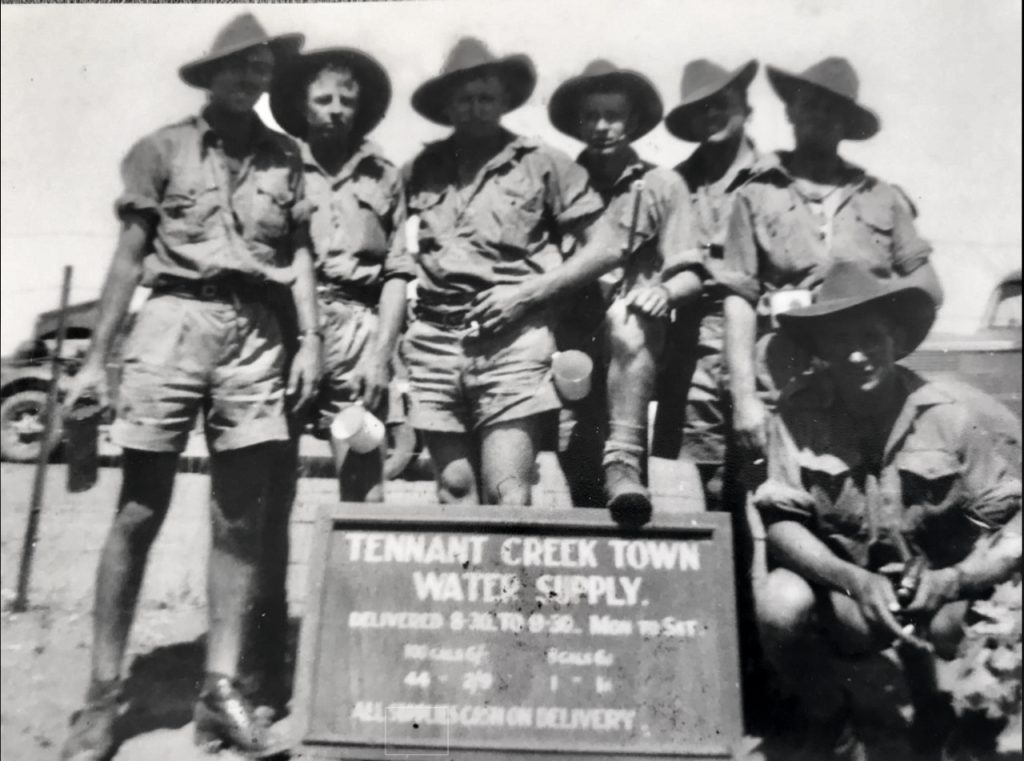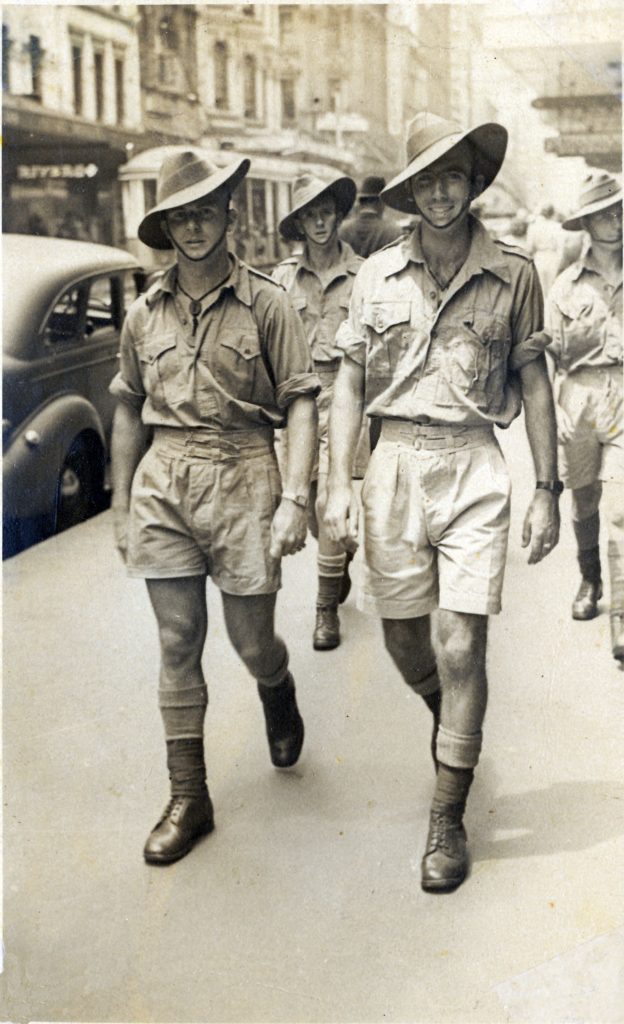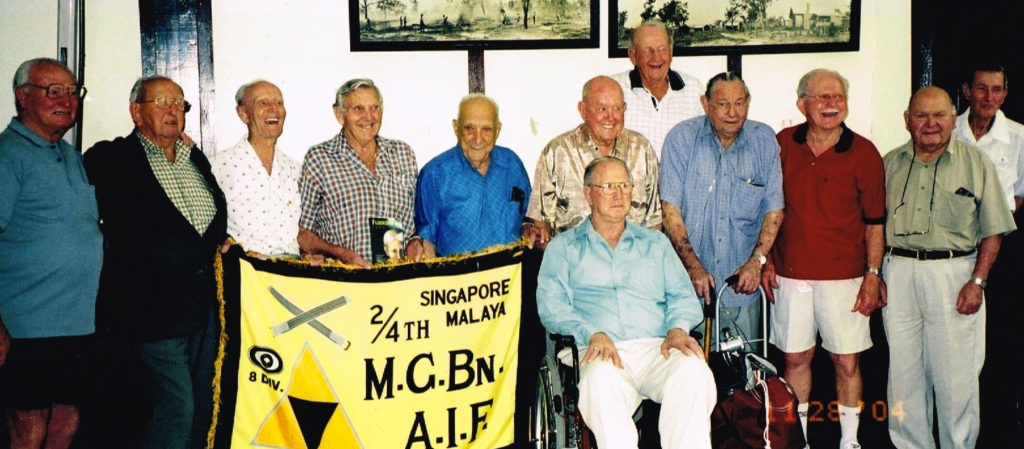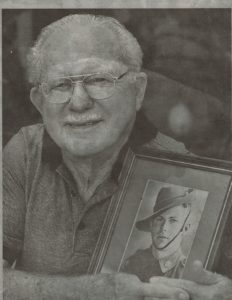The Soldier's Details

- Surname:
- Elliott
- First Name:
- James Stuart
- Nick Name:
- Jim
- Rank:
- Private
- Regimental #:
- WX8619
- Company:
- ‘A’ Company
- Enlisted:
- 18.10.1940
- Discharged:
- 11.01.1946
- DOB:
- 13.12.1919
- Place of Birth:
- Perth, Western Australia
- Father's Name:
- Stuart Elliott
- Mothers's Name:
- Constance Elliott
- Religion:
- Church of England
- Pre-war Occupation:
- Wood Turner
- Singapore:
- Selarang Camp Changi; Selarang Camp Changi; Johore Bahru, Adam Park; River Valley Road Camp; Selarang Barracks Camp
- Force:
- ‘D’ ForceThailand, S Battalion
- Camps Thailand:
- KanuI l , Hintok Road Camp, Tarsau, Chungkai, Tamuang
- Camps Japan:
- Yamane, Niihame
- POW#:
- 1/7614 & 3/7686 & 1609
- Japan:
- Rashin Maru Party
- Return Details 1945:
- Wakayama‐Okinawa, USS Sanctuary; Okinawa-Manila, USS Bingham; Manila-Morotai- Darwin-Perth, B24 Liberator aircraft A72-379
General Description
Above 1941: 2/4th on journey from Adelaide to Darwin. Jim Elliott is standing 2nd from Right. Others L-R Jim Gilmour,’Widgee’ Holst, ‘Blue’ McMahon, Bert Norton, Jim Elliott, Clarrie McDonald. Kneeling is Jim Dore.
From Singapore Jim was selected to work on Burma-Thai Railway with ‘D’ Force S Battalion. He was fortunate in being part of a large contingency of 2/4th men included in this Battalion which departed Singapore Railway Station about 14 March 1943. The 5-day horror rail journey crammed into small railway trucks delivered them to Bampong, Thailand, which at that time was as far as the rail existed. Following several nights at the nearby Komna Transit Camp the men were trucked to Kanchanaburi via Tardun. Following a brief stopover they were marched to Tarsau which was HQ for S Battalion.
The next few weeks at Tarsau, S and T Battalions was engaged on clearing the path ahead for the rail laying gangs. Afterwards S Btn headed south to Kanyu II – arriving on 25 April 1943.
It was here at the Hellfire Pass Cutting the POWs were to quickly realise their Singapore days of incarceration were paradise compared to what was ahead of them.
Firstly it was ‘Speedo’ – their Japanese captors were being pressured to complete the rail project and they would be driven like slaves in slave like conditions until completed.
They worked extraordinary long hours into the nights working by fire light with minimal food of no nutritional value, beaten for little or no reason, subjected to tropical diseases such as beri beri, malaria and dysentery for which there was no medicines and died from complications. Mostly bare-footed and with little or no clothing leaving their lower limbs in particular, to the mercy of flying rock the POWs constructed a cutting through this monolith granite rock face with minimal equipment.
They prayed their small cuts and abrasions would not develop into tropical ulcers, which threatened to grow so large they faced amputation or death. With monsoon rains came cholera, which could kill men within hours.
It took all their strength and the friendship of their mates to survive each day, to sleep at night knowing the next day would be the same.
Around mid-July 1943 Jim was with a party sent to work at Hintok Road Camp – where he was mostly dragging logs from the jungle to be used for trestle bridges. During this work the saw a few elephants and many monkeys.
At Hintok Jim became very ill with malaria and dysentery and was evacuated with others by barge to Tarsau Hospital Camp which at that time was a very large all Australian Camp. He was so ill he was carried to the barge and off at Tarsau.
It was while at Tarsau Jim had spied a container of oil in the Japanese cook house which he managed to steal. He said he was not courageous just desperate to survive. He was lucky not to be caught.
At Tarsau he was aware of very sick POWs who simply had lost their wish to live, and simply lay in their beds to waiting to die.
At Tasau he recovered sufficiently to be able to walk and was then evacuated by steam train to Chungkai Hospital Camp which was also a large camp. With the monsoonal rains the river was running very high and the lower Camp areas were subject to flooding. Although Chungkai was recognised as a mostly British Camp, Jim remained with the Australians and the two groups did not mix.
He was able to undertake light work and collected dry bamboo which he bundled and tied. These bundles were floated down the river which was close by to Japanese cookhouses for their fires.
From Chungkai Jim was sent to Tamuang from where he was to be judged fit and selected to work in Japan. Tamuang was also close to the river and he recalls being allowed to swim and how the tiny fish would bite. He also caught up with many of his mates from 2/4th who had been at Kanyu II and Hintok Road Camp. The POWs were prepared with injections before returning to Singapore by train to await their ship ‘Rashin (Byoki) Maru’.
Built in 1917 the ‘Rashin Maru’ was best described as a ‘rust bucket’, which had survived but sustained damage from Allied attacks. Now sailing under the command of IJA the men sailed for Japan on 4 July 1944 having arrived by train in Singapore arrived in Singapore from Thailand on 27 June 1944.
The crowded ship took 70 very long days to sail from Singapore to Japan. The POWs were not confident of reaching their destination – they were well aware many POWs had lost their lives when their ships were sunk. In fact they were to spend many days and nights feeling terrified whilst locked down in the ship’s hold.
They acknowledged the skill of the ship’s Captain who sailed their little ship away from an Allied attack which could have so easily sunk them, took them to the safety of the Thai coastline to avoid a deadly typhoon, attempted several times to avoid Allied submarines and air attacks before successfully sailing out of Manila harbour for their final leg to Moji, arrived on 7 Sept 1944.
Arriving in Japan from the jungles of Thailand was a huge shock for the men. The weather, food and culture of Japan were as different as they could have ever imagined. Assigned to work at Yamane on the island of Shikoko from Sept 1944 to March 1945 they were sent to Besshi Copper mine where the group of 250 Australian POWs were to work above and below ground.
The group was next sent to Mitsui’s Niihama copper mines. The men were facing another extremely cold winter when the war was finally announced at being over about 15 August 1945.
The men were finally released from Niihama on 13 September 1945. It would be almost another month before Jim arrived home in Perth on 11 October 1945. He had been a POW for 3.5 years.
Please read Jim’s reference to Doc. Hinder at Niihama Camp, Japan
In 1943 Jim’s family receive first news ever since the surrender in Singapore 15 months earlier.
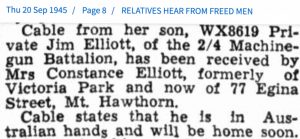
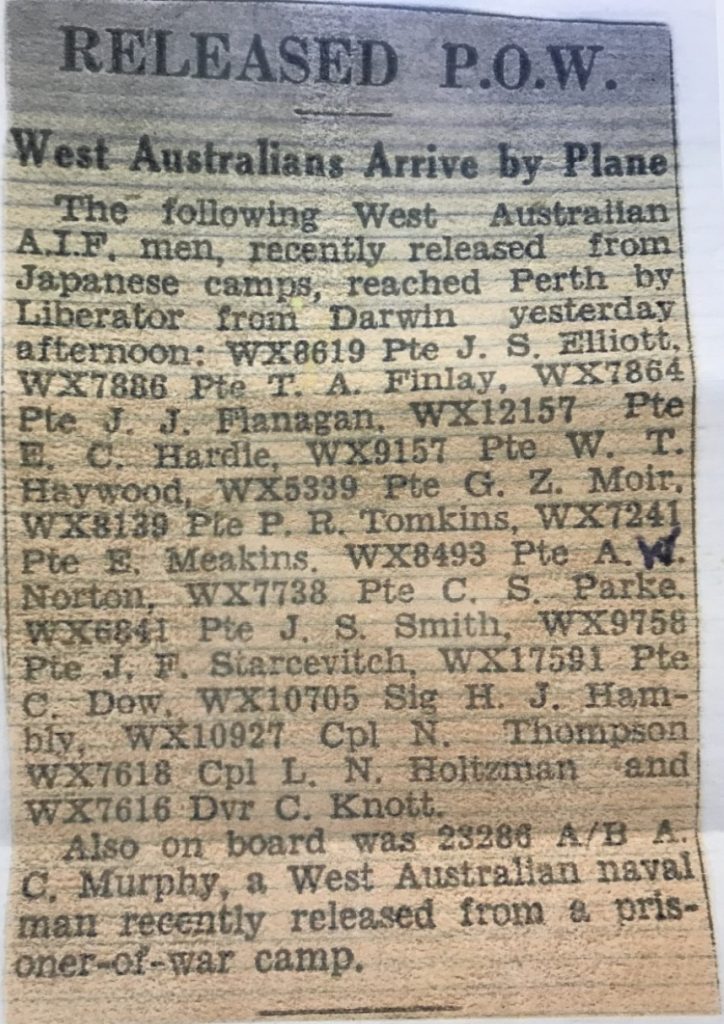

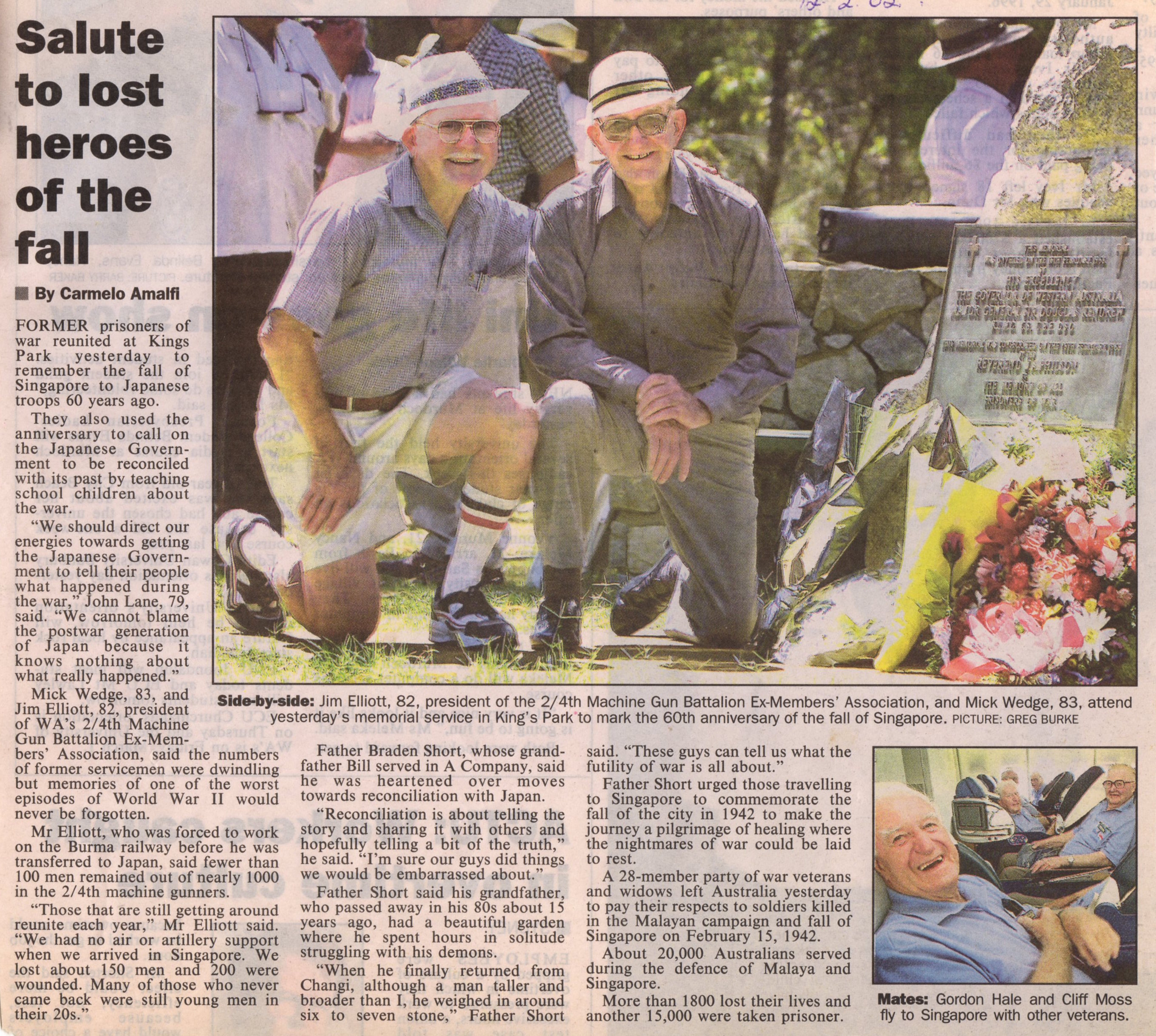
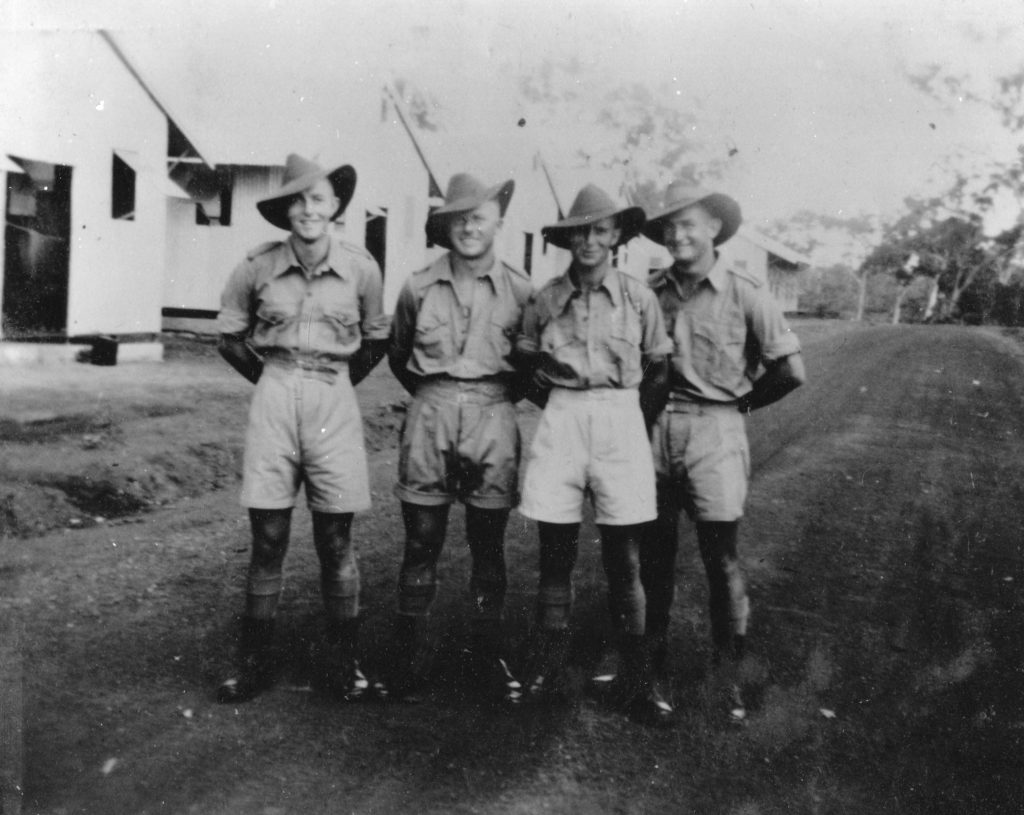

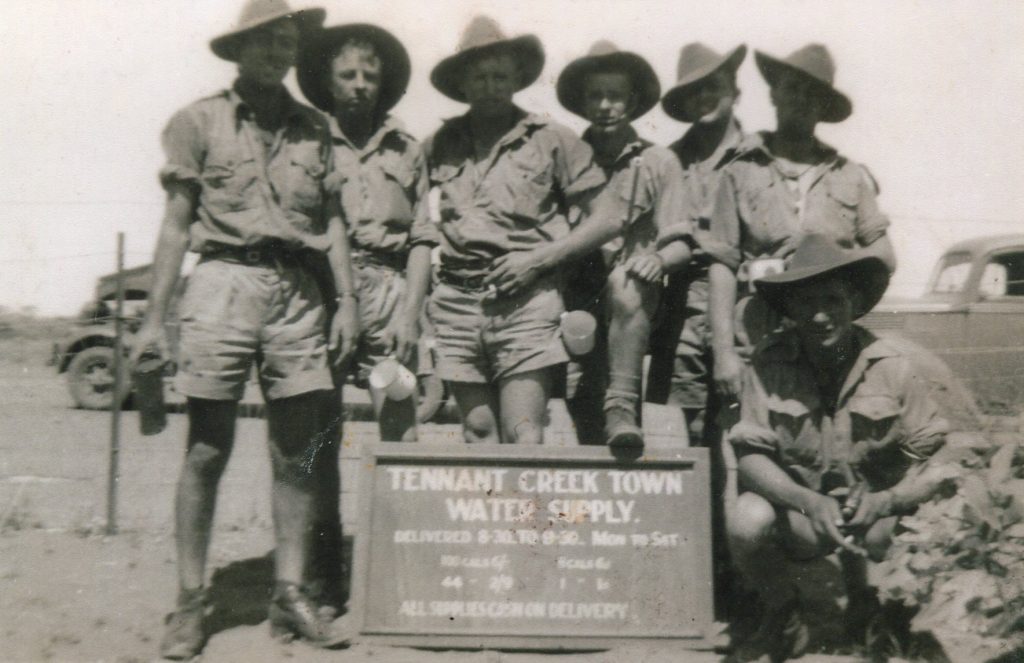
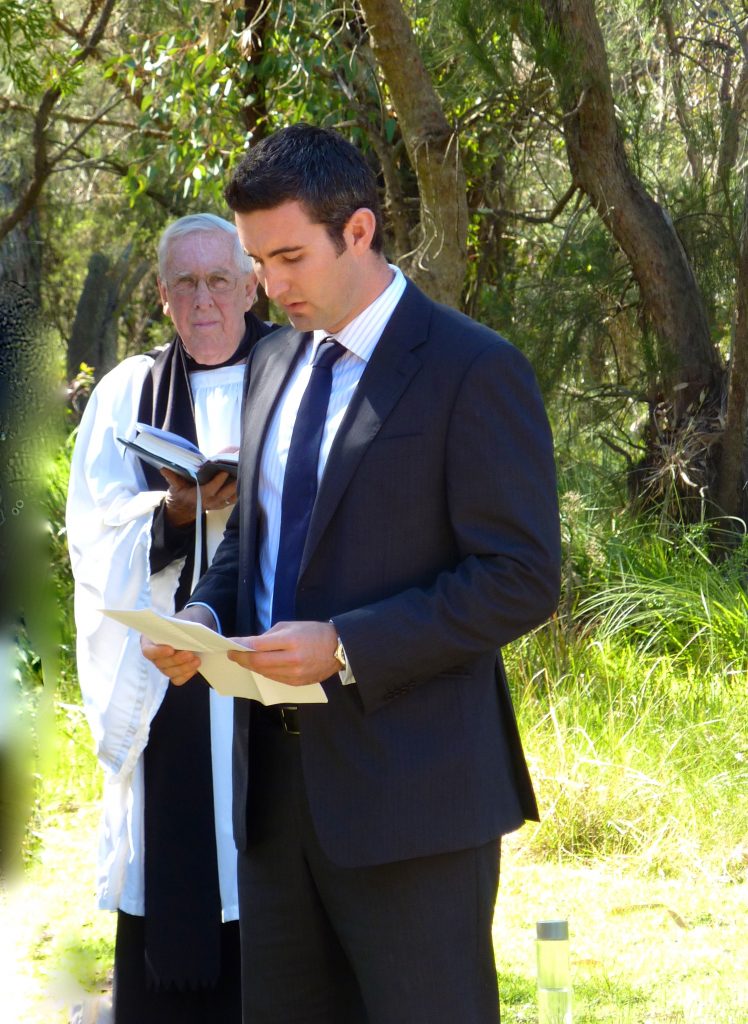
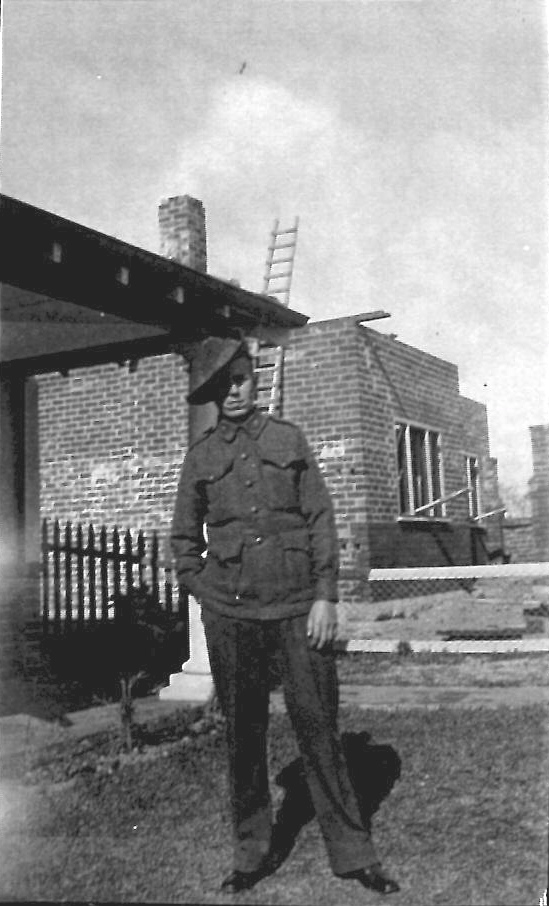
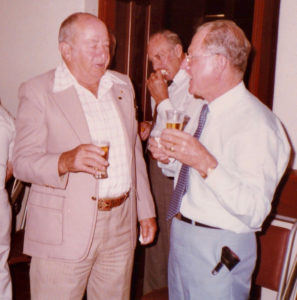
above – 1985 Anzac Day – Ern Zappa and Jim. (Beattie Collection)
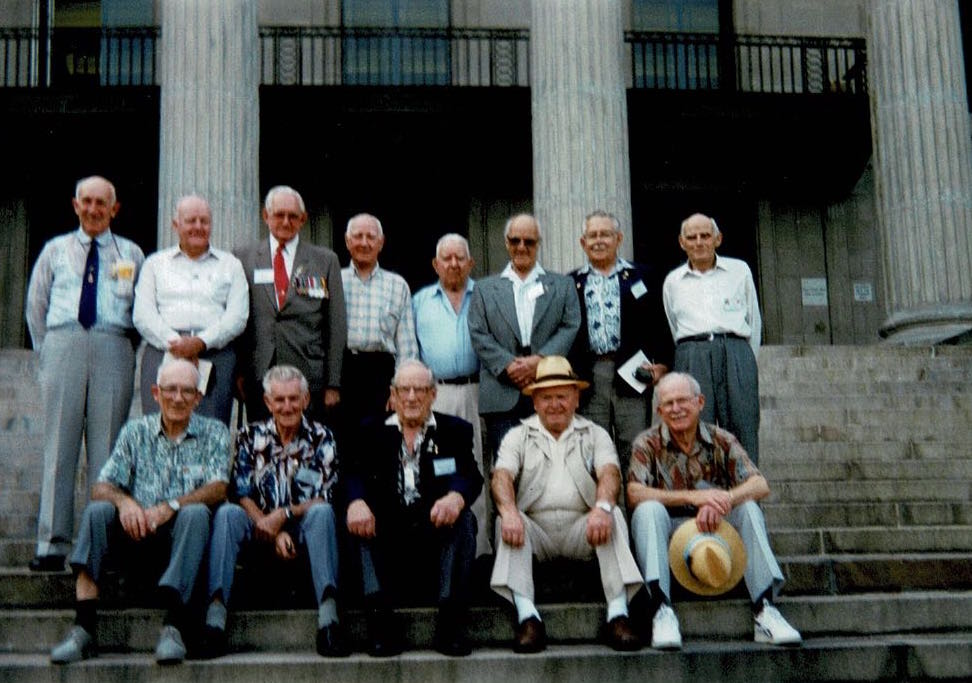
Rear L – R —, Tom Hampton, —, Les Kemp, Norm Ablett, …, Jack Kyrios, Ted Elliot.
Front L – R, Jim Gilmour, John Gilmour, —, Ron Badock, Jim Elliot.
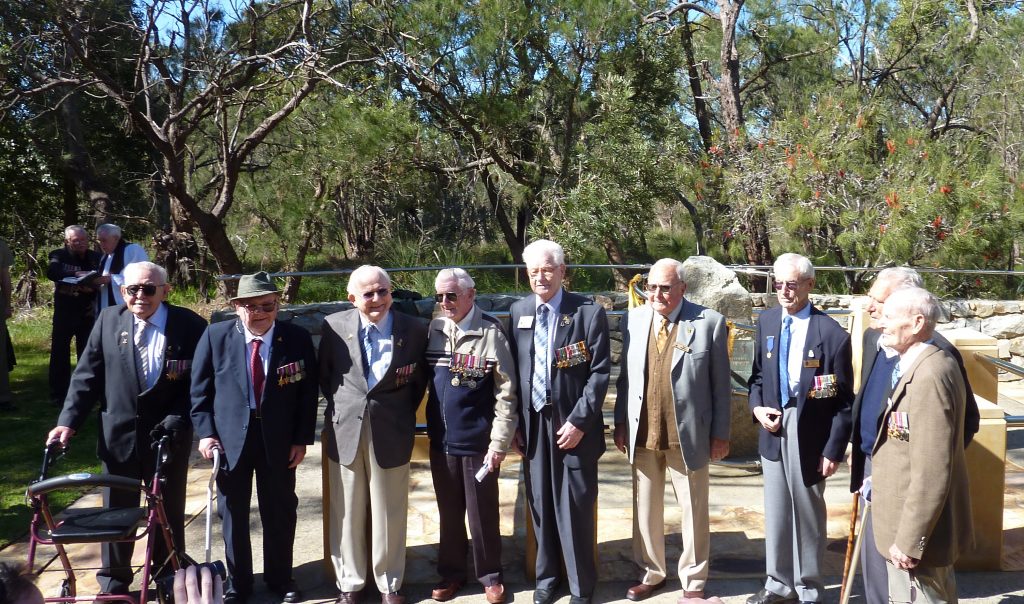
Jim Elliott and Jim Gilmour Sydney 1941
Trevor James, Jim Burns, Alf Worth, John Lane, Des Colevas, Bob Whitield, Joe Pearce (rear), Tom Pilmoor (front), Owen Morris, Jim Elliott, Ron Badock, Gordon Lynam
View Peter Winstanley’s videod interview of Jim Elliott WX8619.
Also read Jim Elliott & Alf Worth
Jim passed away aged 91yrs, March 20 2011, at Joondanna, WA.
Jim’s family visit Singapore 2017
Below: this picture frame remained hanging at Jim Elliott’s home throughout his life and up until his wife Mavis died. It was placed in their dining room on the wall, behind where Jim sat.
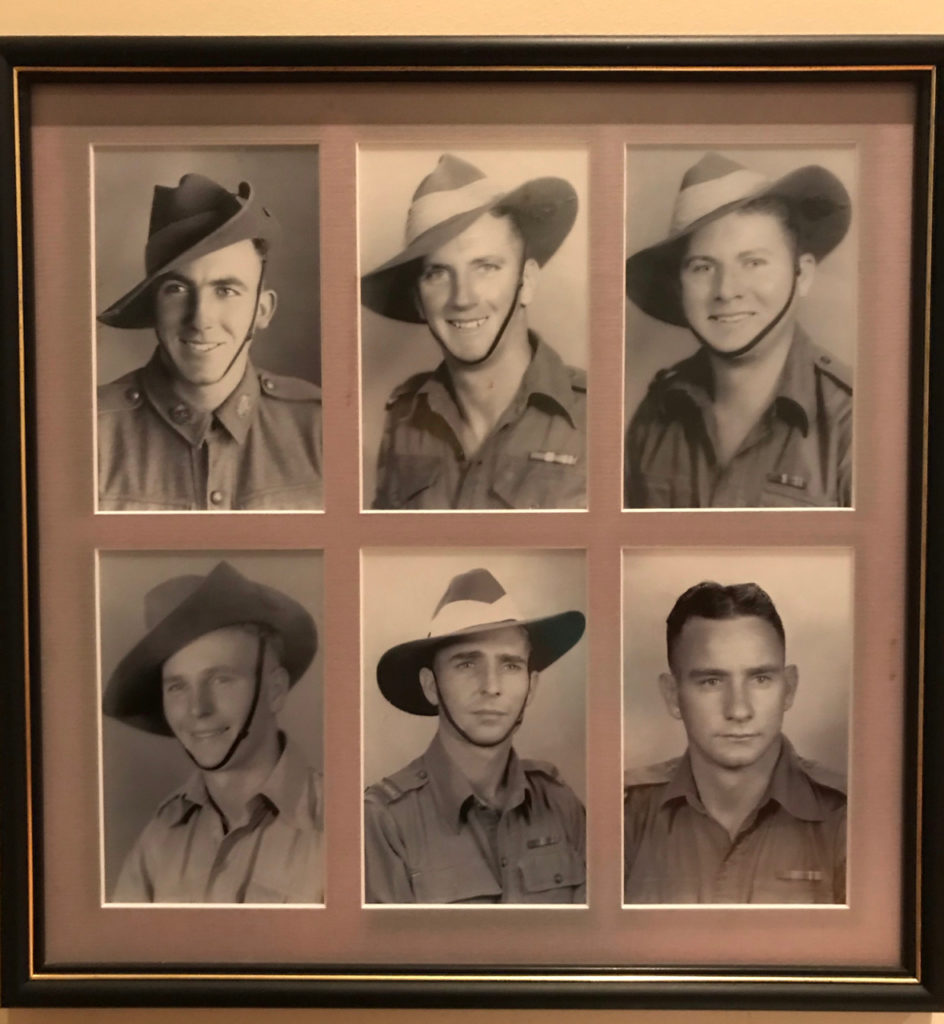
Left-right Top: Brothers Jim Gilmour WX8623 and John Gilmour WX8622 and Jim Elliott WX8619.
Bottom Left-right: Brothers ‘KK’ McDonald WX8621 and Clarrie McDonald WX8620, Jim Dore WX8617.
The six young men were all mates and had joined the Cameron Highland Brigade and later enlisted on the same day, Sunday 18 October 1940 with 2/4th MGB. (Jim Dore’s brother had also enlisted, and was probably the ‘missing number WX8618 – he however returned from SA to WA and did not continue with the Machine Gunners.)
‘KK’ McDonald was the only one not to return home to Australia – he died of cholera whilst working at Konyu II. He collapsed while working on hammer and tap on the railway. Unconscious, KK was carried back to S Btn. camp, immediately diagnosed with cholera and sent to ‘D’ hospital at Tarsau where he died soon after on 15 Sept 1943 aged 24 years. His death hit the 2/4th men hard – KK was very much liked by all who met him. His brother Clarrie never really came to terms with KK’s death, and he himself suicided years later after returning home.
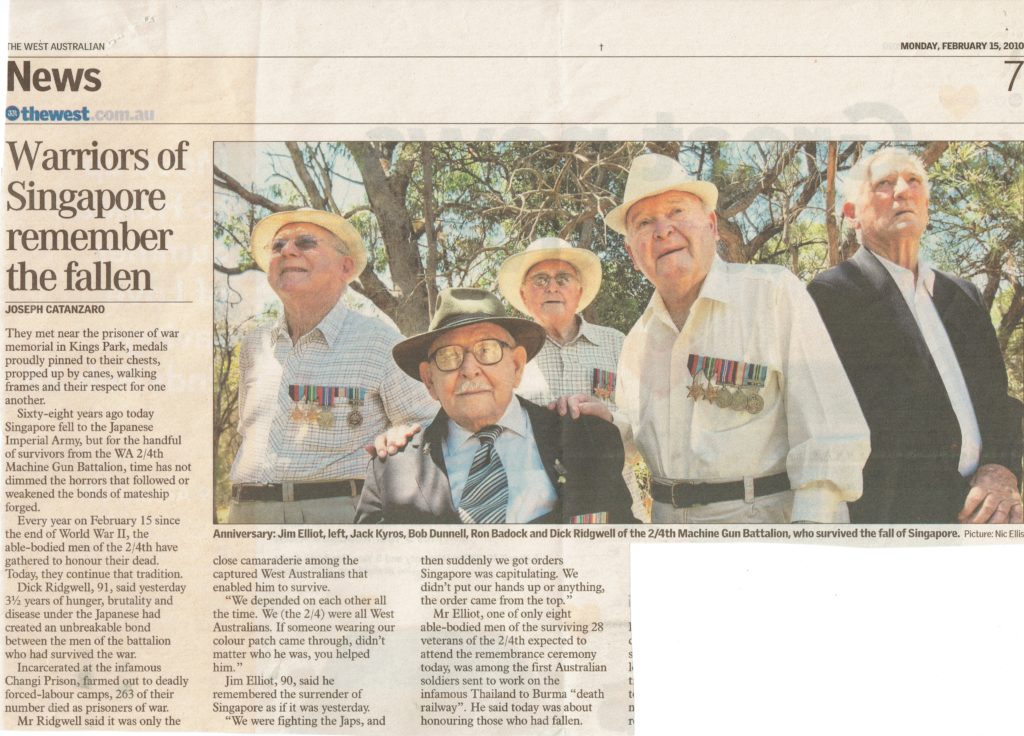
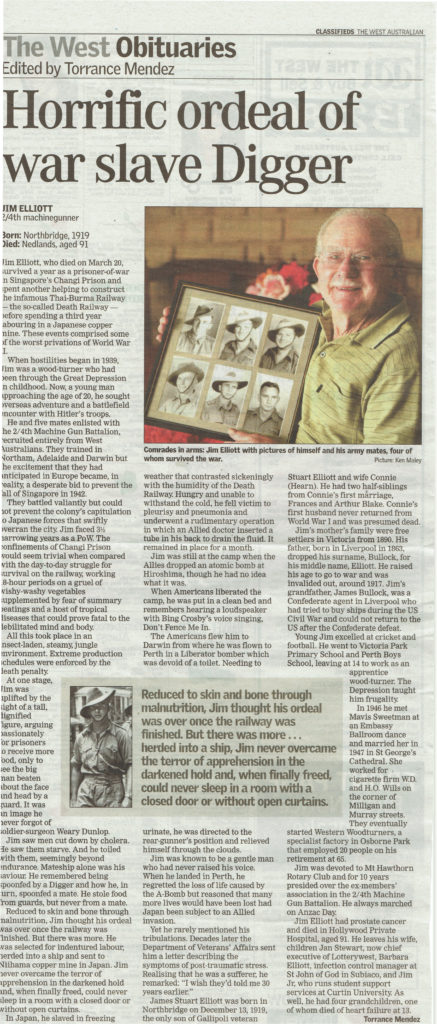
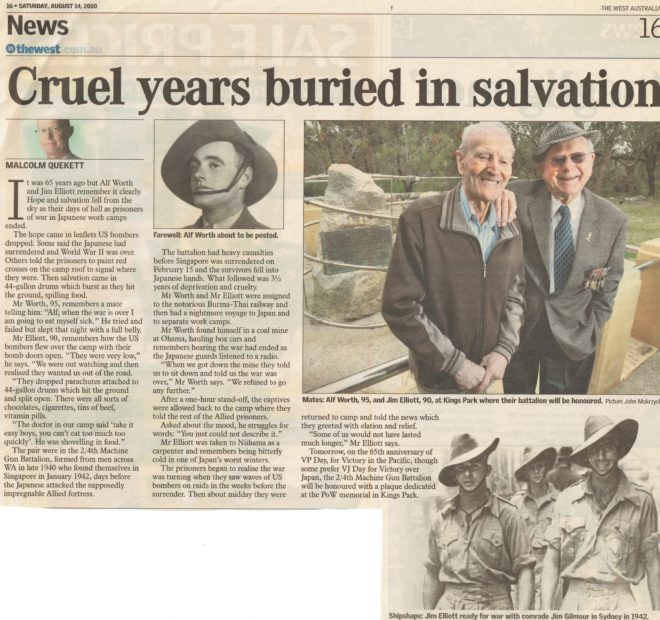
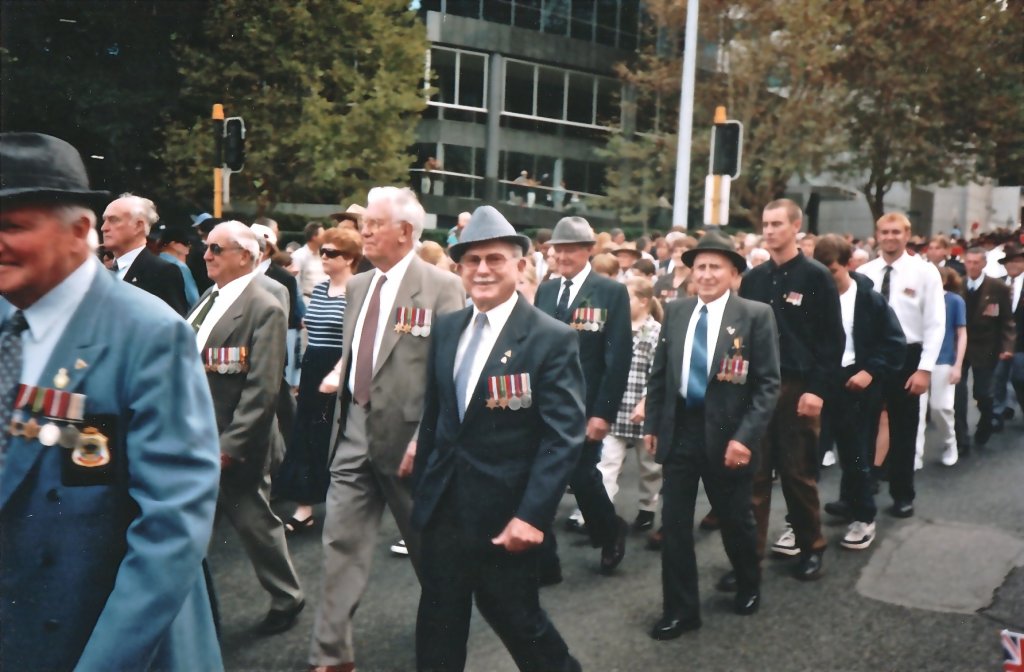
Above: Jim looking at photographer to his right is Don Wall, Claude Dow immediately behind, Tim Mellor and Andy Mellor following (grandsons of ‘Cowboy’ Matthews).
Below: Jim’s daughters Barb and Jan at 2022 VJ Service held Kings Park 14 August, 2022
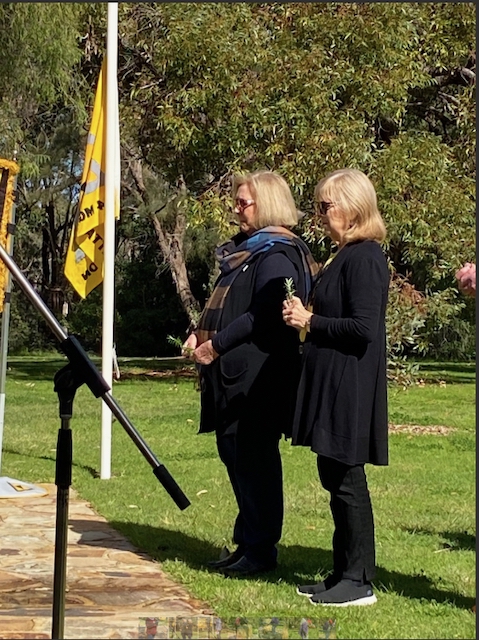
Camp Locations:
- Johore Bahru, - Malaysia
- River Valley Road Camp - Singapore
- Selarang Barracks Changi - Singapore
- Selarang Camp Changi - Singapore
- Chungkai, 60k - Thailand
- Hintok, 154k - Thailand
- Kanu II, 152.30k - Thailand
- Tamuang, Tha Muang 39k - Thailand
- Tarsau, Tha Sao 125k - Thailand
- Nihama, Hiroshima #2-B- Japan
- Yamane, Hiroshima #3-D - Japan

